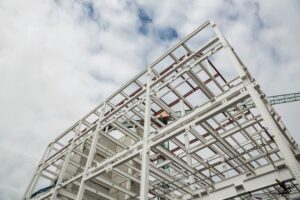
Key Factors to Consider for Building a Manufacturing Unit

Key Factors to Consider for Building a Manufacturing Unit
General Introduction
Building a manufacturing unit is a significant undertaking that requires careful planning and consideration of various factors to ensure operational efficiency, cost-effectiveness, and regulatory compliance. Whether you are establishing a new facility or expanding an existing one, several key factors should be thoroughly evaluated to set the foundation for success. From location and infrastructure to regulatory requirements and operational logistics, each aspect plays a crucial role in shaping the feasibility and long-term viability of your manufacturing venture.
- Location and Accessibility
Selecting the right location is perhaps the most critical decision when building a manufacturing unit. Factors to consider include proximity to suppliers and distribution channels, availability of skilled labor, transportation infrastructure, and market access. A strategic location can reduce transportation costs, shorten lead times, and enhance overall operational efficiency. Additionally, assessing the local business environment, including zoning laws, tax incentives, and regulatory requirements, is essential to ensure compliance and mitigate potential risks.
- Infrastructure and Facilities
The physical infrastructure of your manufacturing unit must be carefully planned to accommodate current needs and future growth. This includes designing the layout for optimal workflow and efficiency, allocating space for production areas, storage, utilities, and administrative functions. Considerations should also extend to utilities such as power supply, water, waste management, and telecommunications infrastructure, ensuring they meet operational requirements and regulatory standards.
- Regulatory Compliance and Permits
Navigating regulatory requirements and obtaining necessary permits are crucial steps in establishing a manufacturing unit. Regulations may vary significantly by location and industry, covering environmental impact assessments, safety standards, building codes, labor laws, and zoning restrictions. Engaging with regulatory authorities early in the planning phase can help streamline the approval process and avoid delays or costly compliance issues down the line.
- Technology and Equipment
Investing in appropriate technology and equipment is essential for maintaining competitiveness and operational efficiency. Assess your production requirements, scalability needs, and budget constraints to determine the most suitable machinery, automation systems, and IT infrastructure. Integrating advanced technologies such as IoT (Internet of Things), robotics, and data analytics can enhance productivity, quality control, and predictive maintenance, driving long-term sustainability and profitability.
- Supply Chain Management
Efficient supply chain management is critical to ensure a steady flow of raw materials and components, minimize inventory costs, and meet customer demand promptly. Establishing reliable supplier relationships, implementing inventory management systems, and optimizing logistics and distribution networks are key considerations. Additionally, adopting lean manufacturing principles and just-in-time (JIT) practices can help reduce waste and improve overall efficiency across the supply chain.
- Workforce Planning and Training
Skilled labor is the backbone of any manufacturing operation. Assessing workforce needs, recruiting qualified personnel, and providing ongoing training and development programs are essential for maintaining productivity and ensuring employee satisfaction. Moreover, fostering a safe and supportive work environment promotes morale, reduces turnover, and enhances operational stability.
- Environmental Sustainability
Increasingly, businesses are expected to prioritize environmental sustainability in their operations. Implementing energy-efficient practices, minimizing waste generation, and adhering to environmental regulations not only mitigate environmental impact but also enhance brand reputation and appeal to eco-conscious consumers. Incorporating sustainable practices into your manufacturing processes can also lead to cost savings through reduced energy consumption and waste disposal expenses.
- Financial Planning and Risk Management
Building and operating a manufacturing unit involves significant financial investment and inherent risks. Conducting a comprehensive feasibility study, developing a realistic budget, and securing adequate funding sources are critical steps. Consideration should also be given to risk management strategies, such as insurance coverage, contingency planning, and business continuity measures, to mitigate potential disruptions and safeguard against unforeseen challenges.
Wrapping Up
Building a manufacturing unit requires careful consideration of numerous factors to ensure successful implementation and sustainable growth. From selecting the optimal location and infrastructure to navigating regulatory requirements, investing in technology, managing supply chains, and prioritizing environmental sustainability, each decision contributes to the overall efficiency, competitiveness, and profitability of your operation. By addressing these key factors systematically and leveraging strategic planning, businesses can position themselves for long-term success in the dynamic manufacturing industry.





